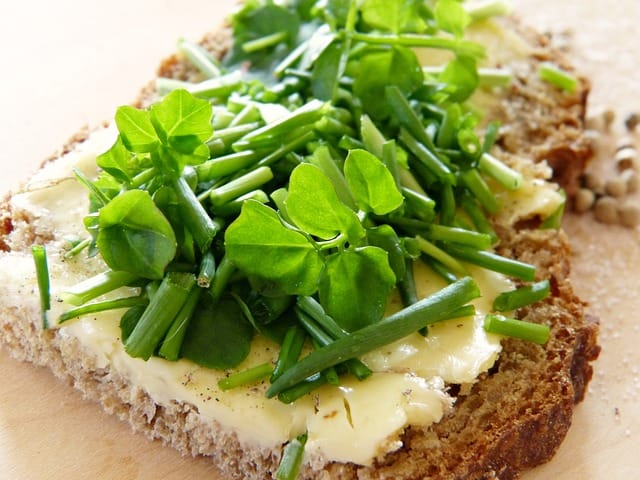How to grow Watercresses
Watercress is a nutritious leafy green vegetable that is widely cultivated for its culinary uses and health benefits

In this article:
- Introduction
- Importance of Watercress
- Choosing the Right Variety
- Climate and Soil Requirements
- Watering and Irrigation
- Propagation Methods
- Preparing the Planting Area
- Planting Watercress
- Managing Pests and Diseases
- Fertilization and Nutrition
- Weed Control
- Harvesting Watercress
- Storing and Preserving Watercress
- Culinary Uses and Recipes
- Potential Health Benefits
- Frequently Asked Questions (FAQs)
- Conclusion
Introduction
Watercress is a nutritious leafy green vegetable that is widely cultivated for its culinary uses and health benefits. With its unique peppery flavor and high nutrient content, growing watercress in your home garden can be a rewarding and enjoyable experience.
Importance of Watercress
Watercress is packed with vitamins A, C, and K, as well as minerals such as calcium, iron, and magnesium. It also contains essential antioxidants and phytochemicals, making it a valuable addition to any diet. Incorporating watercress into your meals can promote overall health and wellbeing.
Choosing the Right Variety
There are different varieties of watercress available, such as Nasturtium officinale and Rorippa nasturtium-aquaticum. Choose a variety that suits your climate and growing conditions.
Climate and Soil Requirements
Watercress thrives in cool climates with plenty of moisture. It prefers a slightly acidic soil with a pH range of 6.0 to 7.5. Ensure the soil is well-drained and rich in organic matter.
Watering and Irrigation
As the name suggests, watercress requires constant access to water. It is mostly grown in water gardens or near streams and ponds. Ensure the plants receive adequate moisture by using a drip irrigation system or by regularly watering the plants.
Propagation Methods
Watercress can be propagated through seeds or by root division. Seeds can be sown directly in the planting area, while root division involves separating sections of established plants.
Preparing the Planting Area
Choose a location that receives partial shade to protect the watercress from extreme heat. Clear any weeds or debris from the planting area and ensure the soil is well-prepared and moist.
Planting Watercress
Plant the watercress seedlings or root divisions in the prepared planting area. Ensure there is ample spacing between the plants to allow for proper growth. Gently press the soil around the roots, keeping the crown of the plant slightly above the soil line.
Managing Pests and Diseases
Watercress can be susceptible to pests such as aphids, slugs, and snails. Regularly inspect the plants for any signs of damage or infestation. Use organic pest control methods or introduce beneficial insects to manage pests effectively.
Fertilization and Nutrition
Watercress benefits from regular fertilization to ensure it receives necessary nutrients. Apply a balanced organic fertilizer every few weeks to promote healthy growth. Additionally, incorporating compost into the soil can enhance its nutritional content.
Weed Control
Frequent weeding is necessary to keep the watercress growing area free from competing plants. Ensure weeds are removed carefully from the roots without disturbing the watercress plants. Mulching around the plants can help suppress weed growth.
Harvesting Watercress
Watercress can be harvested when the leaves are young and tender. Pinch or cut the individual leaves or harvest the entire bunch from the base of the plant. Regular harvesting promotes continuous growth and ensures a fresh supply of watercress.
Storing and Preserving Watercress
Watercress is best consumed fresh to retain its nutritional value and flavor. If not used immediately, store it in the refrigerator wrapped in a damp paper towel or in a container with water to maintain freshness. Avoid storing for more than a few days, as it may wilt and lose quality.
Culinary Uses and Recipes
Watercress can be used in a variety of dishes, including salads, soups, sandwiches, and stir-fries. Its peppery taste adds a unique flavor to any recipe. Explore different culinary uses for watercress and try out delicious recipes that incorporate this nutritious vegetable.
Potential Health Benefits
Watercress is known to have many potential health benefits. It may help improve digestion, boost immune function, support cardiovascular health, and even have anticancer properties. While more research is needed, incorporating watercress into your diet can contribute to a well-rounded, healthy lifestyle.
Frequently Asked Questions (FAQs)
Below are some common questions about growing watercress:
- Can watercress grow in containers?
- How long does it take for watercress to mature?
- Can I freeze watercress for future use?
- What are the alternatives to growing watercress in water gardens?
Conclusion
Growing watercress provides you with a fresh and nutritious vegetable right in your backyard. By following the above guidelines, you can successfully cultivate watercress and enjoy its many culinary uses and health benefits. Take the first steps in incorporating this flavorful vegetable into your garden and experience the joy of growing and consuming your own watercress.
